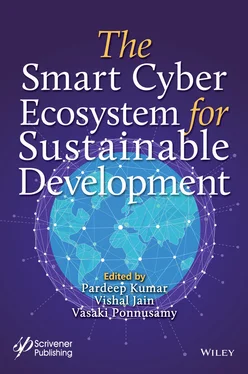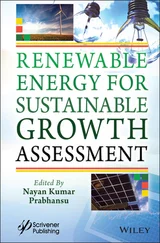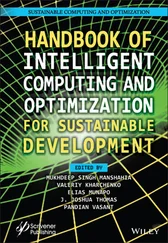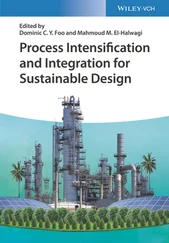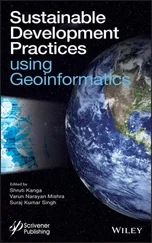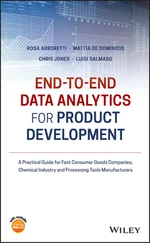1 Cover
2 Title Page
3 Copyright
4 Preface
5 Part 1: INTERNET OF THINGS 1 Voyage of Internet of Things in the Ocean of Technology 1.1 Introduction 1.2 Technological Evolution Toward IoT 1.3 IoT-Associated Technology 1.4 Interoperability in IoT 1.5 Programming Technologies in IoT 1.6 IoT Applications Conclusion References 2 AI for Wireless Network Optimization: Challenges and Opportunities 2.1 Introduction to AI 2.2 Self-Organizing Networks 2.3 Cognitive Networks 2.4 Introduction to Machine Learning 2.5 Software-Defined Networks 2.6 Cognitive Radio Networks 2.7 ML for Wireless Networks: Challenges and Solution Approaches References 3 An Overview on Internet of Things (IoT) Segments and Technologies 3.1 Introduction 3.2 Features of IoT 3.3 IoT Sensor Devices 3.4 IoT Architecture 3.5 Challenges and Issues in IoT 3.6 Future Opportunities in IoT 3.7 Discussion 3.8 Conclusion References 4 The Technological Shift: AI in Big Data and IoT 4.1 Introduction 4.2 Artificial Intelligence 4.3 Big Data 4.4 Internet of Things 4.5 Technical Shift in AI, Big Data, and IoT 4.6 Conclusion References 5 IoT’s Data Processing Using Spark 5.1 Introduction 5.2 Introduction to Apache Spark 5.3 Apache Hadoop MapReduce 5.4 Resilient Distributed Dataset (RDD) 5.5 DataFrames 5.6 Datasets 5.7 Introduction to Spark SQL 5.8 SQL Context Class in Spark 5.9 Creating DataFrames 5.10 Aggregations 5.11 Running SQL Queries on DataFrames 5.12 Integration With RDDs 5.13 Data Sources 5.14 Operations on Data Sources 5.15 Industrial Applications 5.16 Conclusion References 6 SE-TEM: Simple and Efficient Trust Evaluation Model for WSNs 6.1 Introduction 6.2 Related Work 6.3 Network Topology and Assumptions 6.4 Proposed Trust Model 6.5 Result and Analysis 6.6 Conclusion and Future Work References 7 Smart Applications of IoT 7.1 Introduction 7.2 Background 7.3 Smart City 7.4 Smart Healthcare 7.5 Smart Agriculture 7.6 Smart Industries 7.7 Future Research Directions 7.8 Conclusions References 8 Sensor-Based Irrigation System: Introducing Technology in Agriculture 8.1 Introduction 8.2 Proposed System 8.3 Flow Chart 8.4 Use Case 8.5 System Modules 8.6 Limitations 8.7 Suggestions 8.8 Future Scope 8.9 Conclusion Acknowledgement References Suggested Additional Readings Key Terms and Definitions Appendix Example Code 9 Artificial Intelligence: An Imaginary World of Machine 9.1 The Dawn of Artificial Intelligence 9.2 Introduction 9.3 Components of AI 9.4 Types of Artificial Intelligence 9.5 Application Area of AI 9.6 Challenges in Artificial Intelligence 9.7 Future Trends in Artificial Intelligence 9.8 Practical Implementation of AI Application References 10 Impact of Deep Learning Techniques in IoT 10.1 Introduction 10.2 Internet of Things 10.3 Deep Learning 10.4 IoT Challenges on Deep Learning and Future Directions 10.5 Future Directions of Deep Learning 10.6 Common Datasets for Deep Learning in IoT 10.7 Discussion 10.8 Conclusion References
6 Part 2: ARTIFICIAL INTELLIGENCE IN HEALTHCARE 11 Non-Invasive Process for Analyzing Retinal Blood Vessels Using Deep Learning Techniques 11.1 Introduction 11.2 Existing Methods Review 11.3 Methodology 11.4 Databases and Evaluation Metrics 11.5 Results and Analysis 11.6 Concluding Remarks References 12 Existing Trends in Mental Health Based on IoT Applications: A Systematic Review 12.1 Introduction 12.2 Methodology 12.3 IoT in Mental Health 12.4 Mental Healthcare Applications and Services Based on IoT 12.5 Benefits of IoT in Mental Health 12.6 Challenges in IoT-Based Mental Healthcare Applications 12.7 Blockchain in IoT for Healthcare 12.8 Results and Discussion 12.9 Limitations of the Survey 12.10 Conclusion References 13 Monitoring Technologies for Precision Health 13.1 Introduction 13.2 Applications of Monitoring Technologies 13.3 Limitations 13.4 Future Insights 13.5 Conclusions References 14 Impact of Artificial Intelligence in Cardiovascular Disease 14.1 Artificial Intelligence 14.2 Machine Learning 14.3 The Application of AI in CVD 14.4 Future Prospect 14.5 PUAI and Novel Medical Mode 14.6 Traditional Mode 14.7 Representative Calculations of AI 14.8 Overview of Pipeline for Image-Based Machine Learning Diagnosis References 15 Healthcare Transformation With Clinical Big Data Predictive Analytics 15.1 Introduction 15.2 Big Data Challenges in Healthcare 15.3 Cloud Computing and Big Data in Healthcare 15.4 Big Data Healthcare and IoT 15.5 Wearable Devices for Patient Health Monitoring 15.6 Big Data and Industry 4.0 15.7 Conclusion References 16 Computing Analysis of Yajna and Mantra Chanting as a Therapy: A Holistic Approach for All by Indian Continent Amidst Pandemic Threats 16.1 Introduction 16.2 Literature Survey 16.3 Experimental Setup Protocols With Results 16.4 Future Scope and Limitations 16.5 Novelty 16.6 Recommendations 16.7 Applications of Yajna Therapy 16.8 Conclusions Acknowledgement References Key Terms and Definitions 17 Extraction of Depression Symptoms From Social Networks 17.1 Introduction 17.2 Data Mining in Healthcare 17.3 Social Network Sites 17.4 Symptom Extraction Tool 17.5 Sentiment Analysis 17.6 Conclusion References
7 Part 3: CYBERSECURITY 18 Fog Computing Perspective: Technical Trends, Security Practices, and Recommendations 18.1 Introduction 18.2 Characteristics of Fog Computing 18.3 Reference Architecture of Fog Computing 18.4 CISCO IOx Framework 18.5 Security Practices in CISCO IOx 18.6 Security Issues in Fog Computing 18.7 Machine Learning for Secure Fog Computing 18.8 Existing Security Solution in Fog Computing 18.9 Recommendation and Future Enhancement 18.10 Conclusion References 19 Cybersecurity and Privacy Fundamentals 19.1 Introduction 19.2 Historical Background and Evolution of Cyber Crime 19.3 Introduction to Cybersecurity 19.4 Classification of Cyber Crimes 19.5 Reasons Behind Cyber Crime 19.6 Various Types of Cyber Crime 19.7 Various Types of Cyber Attacks in Information Security 19.8 Cybersecurity and Privacy Techniques 19.9 Essential Elements of Cybersecurity 19.10 Basic Security Concerns for Cybersecurity 19.11 Cybersecurity Layered Stack 19.12 Basic Security and Privacy Check List 19.13 Future Challenges of Cybersecurity References 20 Changing the Conventional Banking System through Blockchain 20.1 Introduction 20.2 Literature Survey 20.3 Methodology and Tools 20.4 Experiment 20.5 Results 20.6 Conclusion 20.7 Future Scope References 21 A Secured Online Voting System by Using Blockchain as the Medium 21.1 Blockchain-Based Online Voting System 21.2 Literature Review References 22 Artificial Intelligence and Cybersecurity: Current Trends and Future Prospects 22.1 Introduction 22.2 Literature Review 22.3 Different Variants of Cybersecurity in Action 22.4 Importance of Cybersecurity in Action 22.5 Methods for Establishing a Strategy for Cybersecurity 22.6 The Influence of Artificial Intelligence in the Domain of Cybersecurity 22.7 Where AI Is Actually Required to Deal With Cybersecurity 22.8 Challenges for Cybersecurity in Current State of Practice 22.9 Conclusion References
8 Index
9 End User License Agreement
1 Chapter 1Figure 1.1 Three-layer IoT architecture.Figure 1.2 Evolution of IoT. Figure 1.3 IoT networking.Figure 1.4 Arduino UNO board [21].Figure 1.5 Raspberry Pi 4 [24].Figure 1.6 DHT sensor [29].Figure 1.7 Future smart farm [28].
2 Chapter 2Figure 2.1 SON features.Figure 2.2 Machine learning types.Figure 2.3 Illustration of SVM.Figure 2.4 Illustration of KNN.Figure 2.5 Illustration of K-means clustering.Figure 2.6 The SDN architecture with knowledge plane.Figure 2.7 The OpenFlow architecture.Figure 2.8 The transmission cycle of SU.
3 Chapter 3Figure 3.1 Process of IoT communication.Figure 3.2 IoT communication devices.Figure 3.3 IoT architecture.
4 Chapter 4Figure 4.1 Steps involved in using AI and Big Data together.Figure 4.2 A typical neural network with two hidden layers.Figure 4.3 Three V’s of Big Data.Figure 4.4 Applications of Big Data.Figure 4.5 Major contribution of Big Data in education.Figure 4.6 Statistical data of AI-powered IoT [81].
Читать дальше
